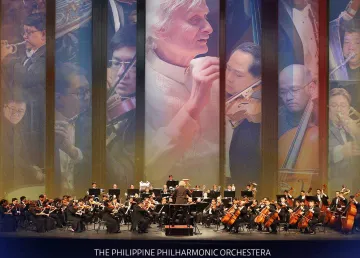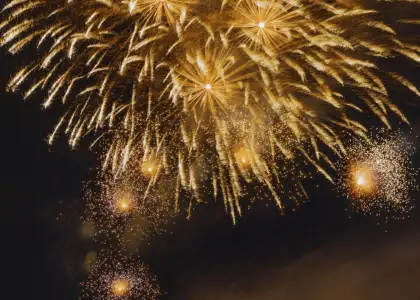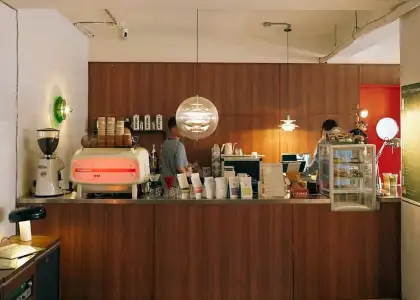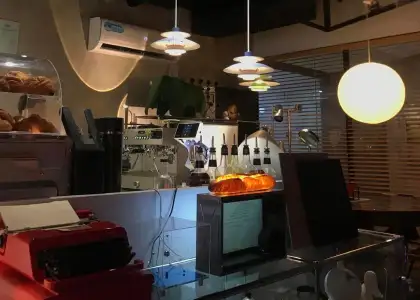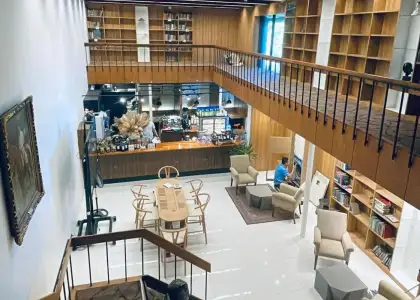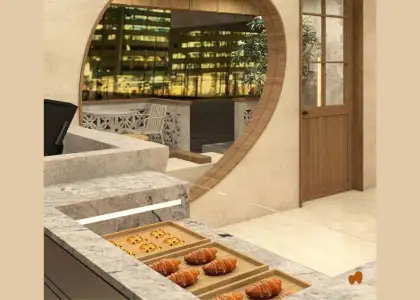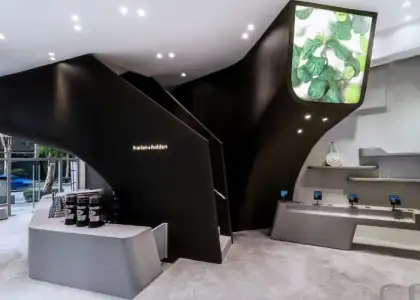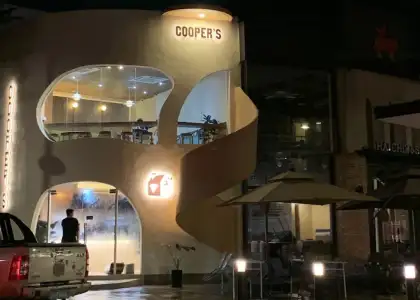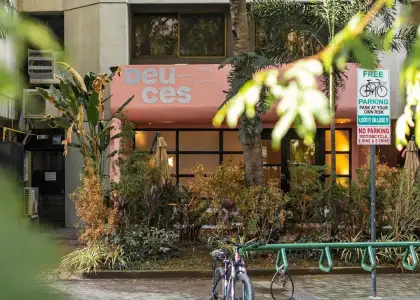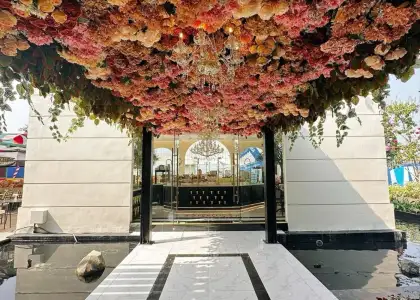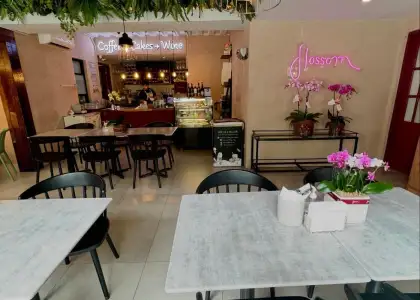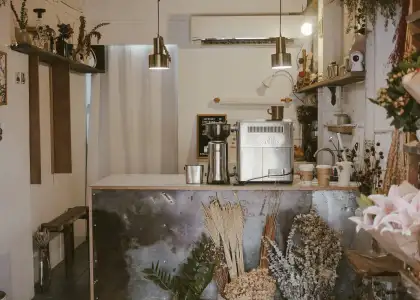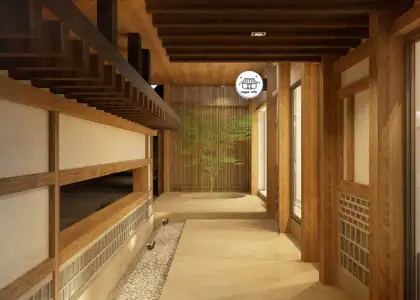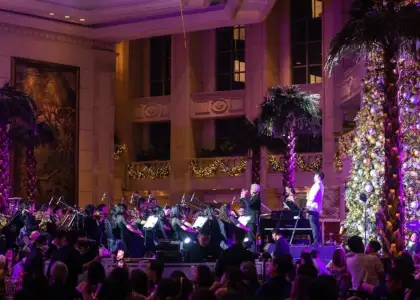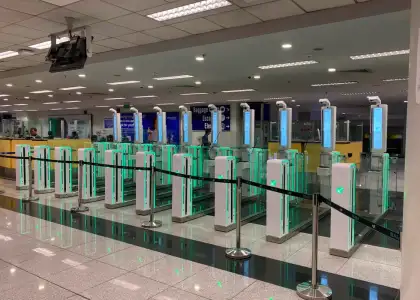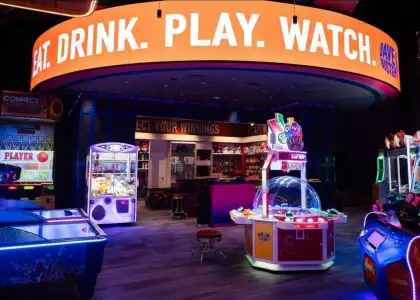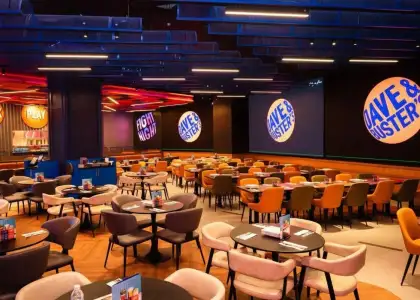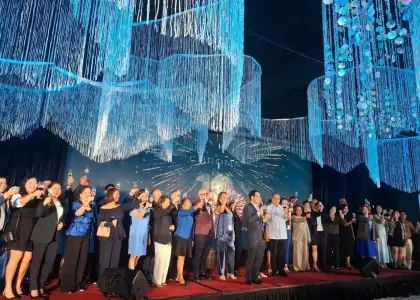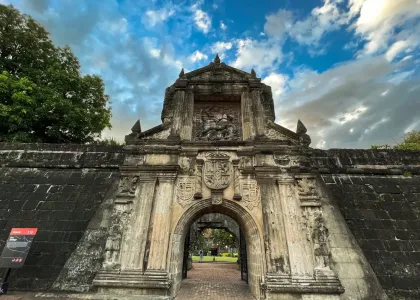Get Your Arts & Culture Fix: Guide to the National Museum of Fine Arts
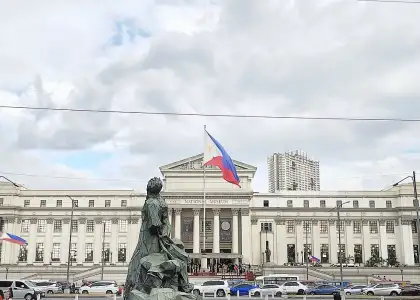
The National Museum of Fine Arts is one of the Philippines’ premier museums, situated in the district of Ermita in Manila. This neoclassical structure is one of three neoclassical buildings comprising the National Museum Complex.
Prior to being a museum, the building first served as the Legislative Building, formally opening the Second Regular Session of the 7th Philippine Legislature on July 16, 1926. In 1935, the building served as the backdrop of the proclamation of the Commonwealth of the Philippines and the inauguration of then-President Manuel L. Quezon.
The building housed different legislative bodies in the Philippines from 1926 to 1972, and the Philippine Senate from 1987 to 1997. In 1945, the Old Legislative Building, along with the Department of Finance building, was heavily bombarded following the Battle of Manila, leaving the north and south wings of the building damaged. The two buildings were rebuilt from 1949 to 1950, following the original blueprints but with less interior and exterior ornamentation.
In 1998, the Old Legislative Building was turned over to the National Museum of the Philippines, with the Fine Arts Museum opening its doors in 2000.
The National Museum of Fine Arts is one of the most visited museums in Metro Manila. Recently, the National Museum of the Philippines announced that all their Central Complex and Regional Component Museums across the country will be open daily from 9 AM to 6 PM for free to be more accessible to the public.
The museum currently houses 29 galleries and hallway exhibitions, where artworks and sculptures dating from the 19th century up to the present, as well as famous paintings from classical Filipino masters, National Artists, and leading modern artists, sculptors, and printmakers, are on display.
Some of the artworks on display in the museum are there for a limited-time period only, being on loan from government institutions, organizations, and individuals.
What to See at the National Museum of Fine Arts
Spoliarium (1884) by Juan Luna
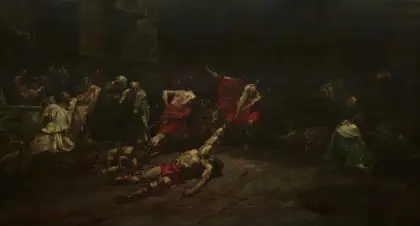
This enormous painting by Juan Luna greets visitors at the Spoliarium Hall, and is one of the museum’s most prized possessions. The Spoliarium won a gold medal (the first of three) at the Exposición Nacional de Bellas Artes in 1884. It depicts a despoiling scene in a Roman circus where dead gladiators are stripped of their weapons and clothing.
Where: Spoliarium Hall, 2F
Josephine Sleeping (between 1895-1896) by José Rizal

This sculpture by the Philippines’ foremost Filipino hero and nationalist, José Rizal, is the museum’s most recent acquisition, unveiled on the 128th anniversary of the hero’s martyrdom. The clay sculpture offers an intimate glimpse into the lives of José Rizal and his “ultimo amor,” Josephine Bracken, and is described by historian and curator Lisa Guerrero Nakpil as the “pinnacle of Rizal’s last four years in exile in Dapitan.”
Where: Spoliarium Hall, 2F
Filipino Struggles Throughout History (1968) by Carlos V. Francisco
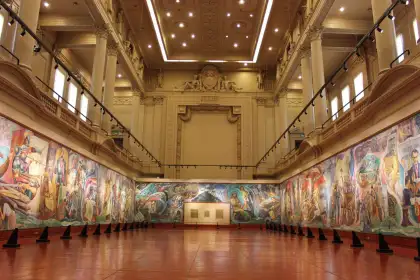
This seven-panel masterpiece by National Artist Carlos “Botong” Francisco is the artist’s greatest surviving work, finished just a month before his death in 1969. The painting features the story of the Filipino people through the centuries, divided into seven paintings.
First painting: Pre-colonial Philippines, arrival of the Spanish, evangelization of the Philippines, the attack of Chinese pirate Limahong, and the Dutch and British invasions of Manila.
Second painting: Francisco Baltazar or Balagtas and Dr. José Rizal surrounded by the characters of the books they wrote, analogizing the abuses of the Spaniards to Filipinos, and the execution of the GomBurZa by garrote in 1872.
Third painting: the establishment of the La Solidaridad, La Liga Filipina, the Katipunan, the execution of José Rizal, the Cry of Balintawak, the entry of the Americans into the Philippines, and the Japanese occupation of the Philippines.
This painting was declared a National Cultural Treasure by the National Museum of the Philippines in April 1996.
Where: Old Senate Hall, 3F
The International Rice Research Institute Series (1962) by Vicente S. Manansala


These paintings by National Artist for Painting Vicente S. Manansala were commissioned by the International Rice Research Institute (IRRI), depicting rural life and small-town events in Los Baños, Laguna, in the transparent cubism style he is renowned for.
These are the first works by Manansala to be declared as National Cultural Treasures.
Where: Gallery XXII International Rice Research Institute (IRRI) Hall, 3F
Una Bulaqueña (1895) by Juan Luna
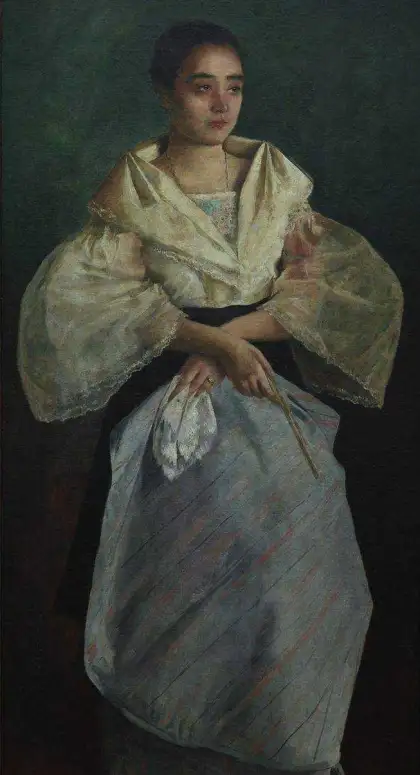
A National Cultural Treasure, this painting is one of the many that Juan Luna painted when he returned to the Philippines in 1894. The woman in the painting was identified by the National Museum of the Philippines to be Emiliana Yriarte Trinidad.
Where: Gallery VI: Far East Bank and Trust Company – Andrés and Grace Luna de San Pedro Memorial Hall, 2F
Interieure d’un Café (Parisian Life) (1892) by Juan Luna

Painted in 1892, it is one of Juan Luna’s works from his time in Paris and from the period he was most active in the Philippines’ Propaganda Movement. This painting depicts a period in Luna’s painting career when he was moving away from the “dark colors of the academic palette” and adapted dispositions “increasingly lighter in color and mood.”
“Parisian Life” also gave a glimpse of Luna’s personal life in Paris, accompanied by two of his close friends, namely José Rizal and Ariston Bautista Lin.
Where: Gallery VI: Far East Bank and Trust Company – Andrés and Grace Luna de San Pedro Memorial Hall, 2F
La Venganza de la Madre (The Mother’s Revenge) (1894) by José Rizal
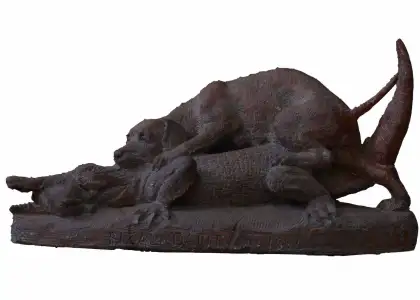
Another of José Rizal’s sculptures made in exile, it’s a depiction of a mother dog trying to rescue her pup from the bite of a crocodile. The National Museum interprets the sculpture as a symbolic representation of Filipino revolutionaries saving the defenseless countrymen from the clutches of Spanish rule.
Where: Gallery V: Dr. Jose Rizal Hall, 2F
Doxology (1993) by Julie Lluch

This piece is made up of two life-size figures made of terracotta. One of the figures is a self-portrait by Julie Lluch, resting on the floor with its hands clasped together as a representation of her hardships. The other figure has its arms and hands extended, and its eyes looking towards the sky as a form of prayer.
Julie Lluch is a renowned terracotta sculptor, her works exploring themes of femininity and societal norms.
Where: Gallery XXIX Philippine Modern Sculpture Hall, 4F
Philam Life Alcantara Relief Series (1961) by Jose P. Alcantara

The 1,536-meter Narra wood relief portrays Philippine history, culture, and folklore. The panels are spread throughout different halls in the National Museum of Fine Arts and had originally decorated the walls of the Philam Life Auditorium, located at UN Avenue, Ermita, until its transfer to the museum in 2019.
Where: Gallery XVI Philippine General Hospital Hall, 3F, and other parts of the museum.
Larawan Litrato, Foto- óleo and Picture Portraits in the Philippines (1891-1953)
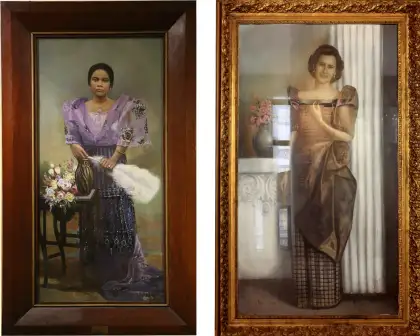
Foto-óleo was an art form popular during the mid-19th to mid-20th centuries, popular most especially with middle-class and prominent Filipino families. This was done by hand-painting directly on black and white photographs to make them appear life-like and become visually appealing.
This special exhibition showcases some of these works from some of the old photo studios in Manila.
Where: Gallery VII Special Exhibition Hall, 2F
Harana in Manila (1955) by Arturo Rogerio Luz
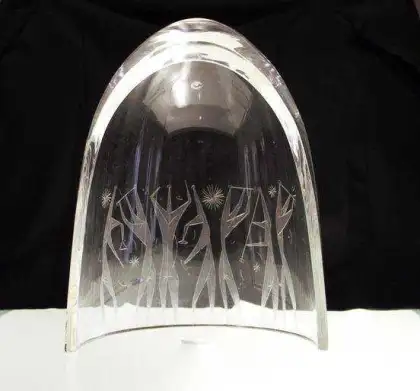
One of the rarest works of Arturo Rogerio Luz, it is the only one he had done in this medium — Steuben crystal. It was part of the “Asian Artists in Crystal” at the National Gallery of Art in Washington, DC, and at the Metropolitan Museum of Art in New York.
Luz portrays the Philippine tradition of courtship or “Harana” with a man leading a group of musicians, presumably his friends, while the sun sets in Manila Bay. The National Museum of the Philippines describes the work as “representative of the artist’s guiding principle in doing art, which is unity, clarity, and simplicity.”
Where: Gallery XXIX Philippine Modern Sculpture Hall, 4F
National Museum of Fine Arts, Floors
- Judiciary Floor
- The House of Representatives Floor
- Padre Burgos Entrance
- The President Manuel Roxas Foyer
- The Spoliarium Hall
- Exhibition Galleries I to XII
- The President Sergio Osmeña Function Hall
- The Senate Floor
- The President Manuel L. Quezon Foyer
- Exhibition Galleries XIII to XXIV
- The Senate Session Hall (Main Level)
- The Senator Claro M. Recto Function Hall
- The Executive Floor
- The Benigno S. Aquino Jr. Senate Foyer
- The Senate Session Hall (Mezzanine Level)
- Exhibition Galleries XXV to XXIX
- The President Jose P. Laurel Function Hall
- Management Offices
How to Get There
The National Museum of Fine Arts is highly accessible by public transport, with jeepneys, buses, and the Light Rail Transit 1 (LRT 1).
LRT 1: Get off at United Nations Station or Central Terminal.
Bus: Alight at the Manila City Hall stop
Jeepney: Jeeps that carry the Mabini sign or from Kalaw will pass by the museum
Guidelines & Things to Remember
- Baggage Counters are available upon entry. Prohibited items are listed on the National Museum of the Philippines' Instagram and on site.
- Photography is allowed inside the museum, but the use of flash photography is strictly prohibited.
- Commercial/Professional photography should secure the necessary permits.
- Guests are encouraged to dress appropriately inside the museum and should consider the sensitivities of others.
Decorum (On Their Instagram Highlights):
- Strictly no touching of exhibition items such as paintings, sculptures, artifacts, specimens, and other objects on display.
- As a courtesy to others, keep noise levels to a minimum when inside the galleries. Shouting is prohibited.
- Do not lean on the glass showcases and pedestals, and avoid stepping on exhibition platforms.
- Do not place any items, such as cellphones, cameras, and bags on the exhibition items and pedestals.
- Observe proper decorum and avoid physical activity that may harm the collections.
- Sitting and lying on gallery floors are also prohibited.
- Staircases must be free from any form of obstruction at all times.
- The NMP reserves the right to dismiss or refuse entry to individuals or groups who violate the abovementioned guidelines/policies.
Location: National Museum of Fine Arts, Old Legislative Bldg., Padre Burgos Drive, Ermita, Manila, Philippines 1000
Opening Hours: 9 AM to 6 PM, Daily
Admission Fee: Free
For Groups of 20 or more: Please book 5 days in advance through reservations.nationalmuseum.gov.ph or email reservations@nationalmuseum.gov.ph.
Follow them on Facebook, X (Formerly Twitter), and Instagramfor more details and updates! Check out their website for more information.
Get the latest curated content with The Beat Asia's newsletters. Sign up now for a weekly dose of the best stories, events, and deals delivered straight to your inbox. Don't miss out! Click here to subscribe.



